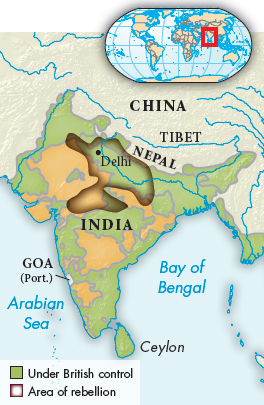The Evolution of British Rule

In India the British ruled with the cooperation of local princely allies, whom they could not afford to offend. To assert their authority, the British disbanded and disarmed local armies, introduced simpler private property laws, and enhanced the powers of local princes and religious leaders, both Hindu and Muslim. The British administrators were on the whole competent and concerned about the welfare of the Indian peasants. Slavery was outlawed and banditry suppressed, and new laws designed to improve women’s position in society were introduced.
The last armed resistance to British rule occurred in 1857. By that date the British military presence in India had grown to include two hundred thousand Indian sepoy troops and thirty-
After 1858 India was ruled by the British Parliament in London and administered by a civil service in India, the upper echelons of which were all white. In 1900 this elite consisted of fewer than 3,500 top officials for a population of 300 million.